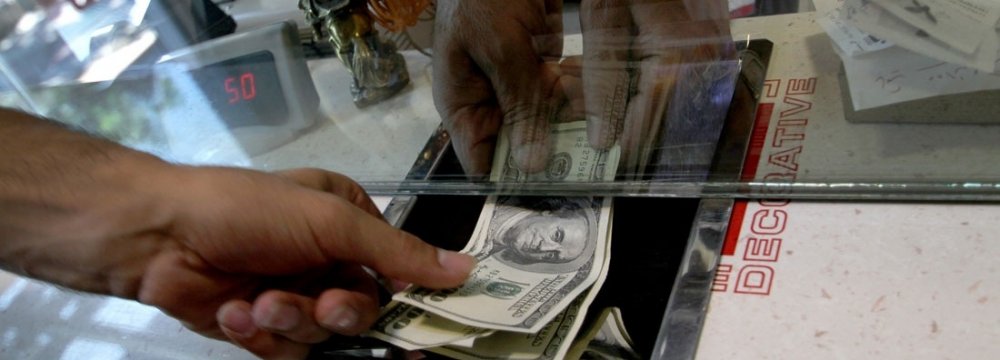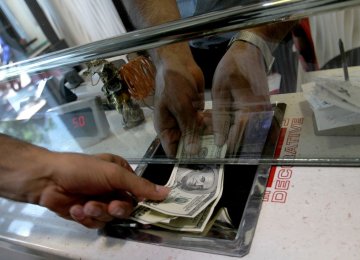The rial hit a record low against the US dollar in Tehran's foreign exchange market, in keeping with its customary surge in December every year.
On Sunday, the rial was quoted at 41,550 to the dollar, inquiries by Financial Tribune showed, although higher rates were also reported by the local media later in the day.
The American currency had last reached an all-time high against the rial in December 2016, when US president-elect Donald Trump was preparing to take office.
Although the Central Bank of Iran–traditionally averse to a weak rial–has in recent months grown more receptive to the notion of higher forex rates, it gives top priority to a stable forex market. CBI Governor Valiollah Seif has repeatedly referred to this stability as one of his achievements.
Inquiries by Financial Tribune indicated that some exchange shops had halted currency trade altogether on Sunday, noting that the move "is customary when the exchange rate surges".
In 2012 and during the tenure of the previous administration, the rial experienced its biggest slide when the currency lost 75% of its value over the course of three months.
An analysis by Tehran Stock Exchange shows the rial has lost 10.4% of its value against the greenback since the start of the Iranian year on March 21.
On Saturday, the other high-demand currency, euro, also rose against the rial to register a rate unseen since nearly four years ago.
The rial was quoted at 50,400 per euro as of Sunday. Euro's gain against the dollar in global markets has been cited by market observers as one of the reasons behind the European currency's rally.
On Thursday, the euro was exchanged at 0.42% higher against the greenback to $1.189, after climbing to $1.193.
Rial's loss, however, has been a gain for the stock market, which last week surpassed its all-time record. TSE's main index on Sunday was down 344.90 or 0.38%, but at 90951.8 is still as bullish as it could be.
Government's Role
As the end of the current Iranian year also approaches in March, some market players also point their finger at the government for whom a weaker rial is considered a boost, but in recent comments President Hassan Rouhani vehemently denied such claims.
Pouya Jabal Ameli, an economist with the CBI and a currency market analyst, believes that to plug its budget holes, the administration prefers to resort to tools other than rial devaluation.
"Although the government has no desire to let the rial weaken, it can be fairly said that the central bank has let the market forces moderate the exchange rate as long as it does not have inflationary repercussions," Jabal Ameli wrote in a statement sent to Financial Tribune.
"Therefore, the recent surge in exchange rates is not forced, mandatory or inflation-stoking, but rather sound policymaking, involuntary and non-inflationary."
Jabal Ameli, however, urged the central bank to be more courageous in raising the official exchange rate in line with market rates to reduce rent-seeking behavior.
CBI had fixed the official rate for the US dollar at 35,277 on Sunday.
Leading private sector figures have in recent months issued clarion calls to the government to allow the exchange rates to become "real" and boost domestic manufacturing and exports.







Add new comment
Read our comment policy before posting your viewpoints